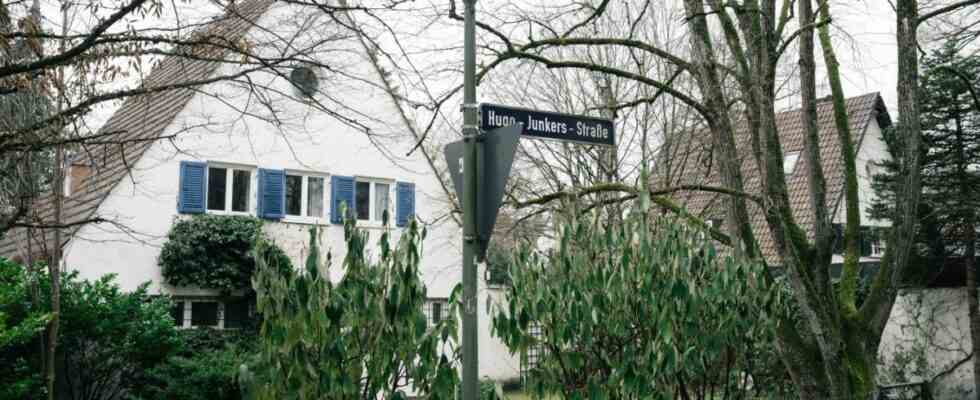The small, charming settlement has a slightly anachronistic flair and casts a spell over passers-by: ten houses stand side by side on Hugo-Junkers-Straße in Grünwald, all designed in the 1930s by the well-known architect Sep Ruf, who had a significant influence on German post-war architecture . Despite this, there is talk in Grünwald that an investor is demolishing one of these houses at the intersection with Südliche Münchner Strasse in order to build an office and residential complex there. The members of the building committee initially seemed inclined to wave this plan through on Monday evening. But in the course of an hour-long discussion, the turning point came. It was then unanimously decided to re-examine the whole thing.
This change of opinion apparently came as a complete surprise to Stefan Rothörl, the head of the building administration. Even before the meeting, he had emphasized that the decision to demolish the house had long been made, after all – in contrast to the other nine Sep-Ruf houses on the street – it has not been a listed building since 1998. And so, at first, formal questions about the new building were dealt with in the meeting. It was about the relationship between commercial and private use, how large the underground car park could be designed and whether it would also be possible under building law to build two basement floors. With the Sep-Ruf construction, some of the committee seemed to have already finished.
Not so Green Party Councilor Susanne Kruse, she described the formal questions as details that “ignore the problem” and emphasized that the court decision 25 years ago to withdraw the building’s monument protection was “incomprehensible”. “There is no reason to demolish this one house and not the other nine,” said Kruse, who suggested that the community should buy the building, for example for charitable purposes. “We should put the ten houses under ensemble protection,” she said, and received spontaneous applause from the residents present, who had taken their seats in the auditorium in the upper tier.
Second Mayor Stephan Weidenbach (CSU), who chaired the meeting, did not initially give the impression that he wanted to even begin to question the intended procedure: “We are not an approval authority,” he called out to the committee members. At that time, the court “clearly denied” the protection of monuments or ensembles, so it was “the wrong signal” to reject the preliminary decision. Weidenbach underpinned his position by harshly suppressing the audience’s applause during arguments against the demolition of the house. And department head Rothörl also stuck to his opinion: “I don’t know why it’s getting so bad,” he said, claiming that “the excavators could come tomorrow,” the legal situation was so clear. And in general there is not enough time to react, a decision must be made by March 28, otherwise the community’s silence will be considered approval. However, it is not enough to reject the preliminary decision, one must also make a constructive counter-suggestion in order not to engage in preventive planning.
“Sep Ruf would turn in his grave”
But by then the mood in the committee had already changed, and the local politicians gradually shed their reticence. FDP local councilor Michael Ritz said: “Sep Ruf would turn in his grave if he found out.” He also recalled that the neighbors had “renovated their houses extensively in the sense of the ensemble”. And the CSU local councils also began to ponder: The third mayor, Uschi Kneidl, said she was “not in a position to agree to the preliminary decision”, her parliamentary colleague Reinhard Splettschläger expressed concerns that a precedent would be set if the demolition was pushed through now : “That’s why we can’t make a decision today, but first have to make further inquiries.”
Eventually, committee members decided to postpone the decision, to the relief of local residents. The dedicated group, which includes the 92-year-old former entrepreneur and still active painter Otto-Ernst Holthaus, is already in lively contact with the State Office for the Preservation of Monuments. There they clearly spoke out in favor of preserving the house and district monument conservator Rolf Katzendobler also wants to save the building, according to Greens councilor Bettina Schreyer. In any case, the neighbors are wildly determined to fight for the preservation of Hugo-Junkers-Straße 1.
The topic is now to be put back on the agenda at the next meeting on March 13th. On the one hand, it is unclear how the district office will position itself as the approval authority in the present case and, above all, what the owner of the property is planning in concrete terms and whether he could possibly bring himself to sell the property to the municipality. One of the many questions that Grünwalder will have to answer in the coming weeks.
Sep Ruf (1908-1982) is considered one of the most important architects of the post-war period in Germany. The Munich resident has set important accents in the cityscape with public buildings and residential buildings. His buildings are considered light and transparent. Ruf gained notoriety through the construction of the Chancellor’s Bungalow in Bonn. From 1934 to 1936 he built a small residential complex in Grünwald for the senior employees of the Munich Hugo Junkers works. One of the ten by ten meter residential buildings could now be demolished. According to the “Sep Ruf Gesellschaft”, the architect saw a “social and fundamental task” in the construction of residential buildings. He wanted to design “a living organism” that would “grant city dwellers light, air and sun and a place to sit outside in the garden”.

